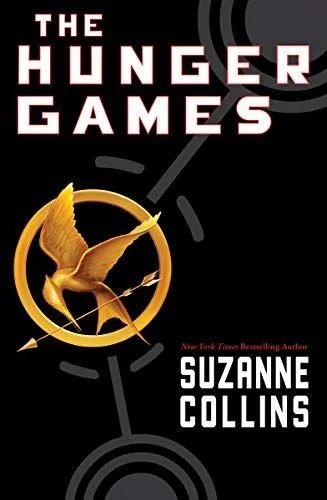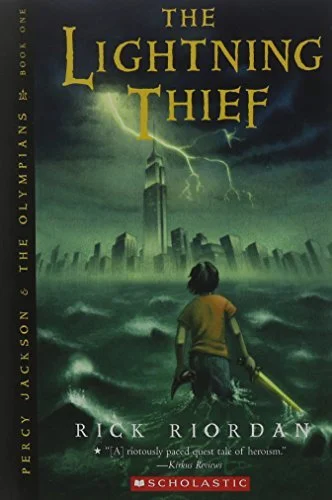I Reread My Favorite Books From Middle School
Here’s which ones are worth the reread and which to skip
By Laine Bottemiller, Culture Editorial Assistant
In middle school, I was an avid reader. I could chow down a Harry Potter book in four hours. Over time, however, I’ve lost my passion for reading. Especially being a humanities major, I found myself burnt out on reading (I’m talking about you, 80 pages of Political Science reading).
Recently, I decided to get back into reading for fun. Overwhelmed by an entire library, I wasn’t sure where to start, so I picked up exactly where I left off. After rereading my favorite books from middle school, here’s which ones were as good as I remember and which ones were disappointing. Spoilers ahead!
“The Hunger Games” by Suzanne Collins
In the dystopian country of Panem, 24 tributes are randomly drawn to fight to the death in The Hunger Games. If you thought other young adult novels were angsty and hormonal, “The Hunger Games” has the characters at each other's throats… literally. When Katniss Everdeen volunteers as tribute for the 76th annual Hunger Games, she must navigate an alliance with Peeta, her district counterpart. Even if Katniss can survive long enough to return home, will she ever be able to leave the Games?
The template for nearly every teenage-dystopian-love-triangle novel, “The Hunger Games” set an untouchable standard for this genre. The book excels in its characterization; each character is unique and complex. For example, Katniss navigates romance for the first time but isn’t shallow and ditsy. Instead, she’s serious, self-critical and determined. Katniss’s only motivation is returning to her family, and her relationship with Peeta is only a means to an end, despite later becoming more. That determination and authenticity make the audience root for Katniss.
Enter the love triangle: #teampeeta or #teamgale? There is a right answer, and that answer is Peeta. But Laine! Liam Hemsworth is so sexy! I can’t disagree with that, but Peeta’s kindness and softness perfectly compliment Katniss. The two grow together and support each other; their relationship blossoms from an awkward, uncertain obligation to the strength of understanding and necessity.
Despite this trilogy being marketed to middle schoolers, Suzanne Collins tackles some really thought-provoking themes, like governmental power grabs, propaganda, war crimes and post-traumatic stress disorder. In the third novel of the series, Katniss even considers what level of violence is justified in rebellion. Collins paints a stunning picture of loss, never failing to move me to tears.
I think I’ve made my point. “The Hunger Games” has legitimate literary value, and this reread cemented its position as one of my favorite books. 9/10. Definitely worth the reread.
“Divergent” by Veronica Roth
Upon her 16th birthday, Tris must choose which faction she identifies with: Abnegation, selflessness; Candor, honesty; Dauntless, bravery; Erudite, knowledge; or Amity, happiness. When Tris chooses Dauntless, she must face her fears and rise above the rest of her newly-initiated class. Can Tris stay brave and rise victorious, even despite government conspiracy?
“Divergent” is the less cool younger sister to “The Hunger Games.” This book attempts many of the same aspects as “The Hunger Games,” like government corruption and war, but lacks the same complexity and depth. This book’s depictions of war are shallow, focusing on the drama of violence rather than its sorrow. The antagonist waging war has two character traits: she is smart and evil. Hello? I’ve never heard of someone starting a war because they’re… smart? Why does she want power? Why is she evil? Where are her motivations?
The book is lacking in character development. Tris’s friendships fall flat, and the characters are unidimensional; Christina is honest, Four is self-loathing and Tris is determined. The only character Tris is strongly connected with is her love interest, Four, but the two are missing any genuine connection or relationship development. Why is Four immediately willing to risk everything for Tris? Also, let’s discuss how they exchange ‘I love you’s’ by the end of the first book. Veronica Roth, where is the slow burn we deserve?
4/10. Not worth the reread. Let’s keep it in the middle schools.
“The Lightning Thief” by Rick Riordan
After nearly being charbroiled by an angry substitute teacher, 12-year-old Percy Jackson travels with Grover, his goat-legged best friend, to Camp Half-Blood. Camp Half-Blood is exactly like a normal summer camp, except its campers are the children of Greek Gods who spend their summers sword-fighting, chariot-racing, and (obviously) making smores. Percy’s time at Camp Half-Blood halts to a stop when someone steals Zeus’s lightning bolt. Can Percy, Annabeth and Grover complete their quest for the truth about the Lightning Thief?
I won’t lie, this book is definitely meant for 12-year-olds. Laine, duh! The book’s plot is really simple; I never got that ‘couldn’t put it down’ feeling. There aren’t any compelling emotions or thought-provoking points, but the book’s simplicity makes it an easy and relaxing read.
“The Lightning Thief” is told by a 12-year-old, and honestly, I love it. The book definitely has middle-school humor, but it keeps the reading lighthearted and enjoyable. Percy is an against-all-odds hero; he’s a smartass who doesn’t take anything too seriously, and you love him for that. Rick Riordan avoids the mistakes of many YA books and keeps Annabeth and Percy’s relationship from being too serious. They’re teenagers in their first relationship; they don’t know what love is, so of course, they are awkward.
I’m still convinced I’m a daughter of Athena, and rereading this book reminded me of my childhood. 6/10. An easy, lighthearted read.
“The Book Thief” by Markus Zusak
The story follows Liesel Meminger, a 10-year-old German girl, as she is relocated to a foster family following the loss of her brother. As Liesel grows up through World War II, her love for reading allows her to foster a friendship with Max, a Jewish man her family is hiding. Throughout the story, the story’s narrator, Death, crosses paths with Liesel and is haunted by humankind’s duality.
This book is beautiful. Death follows Liesel’s story in a fragmented, disconnected, yet infatuated way. Death interjects the story with ‘notes’ and flashforwards, even interrupting scenes to tell a character’s ending. By mixing concrete and abstract concepts and blending colors with emotions, Zusak illustrates Death’s perceptions of humankind while maintaining Death’s distance. The novel tempers the atrocities of mankind with the beauty of humans’ kindness.
“The Book Thief” scores again in its characterization. The characters are endearingly human! We see the same complexity that Death sees in humans; we see their flaws, but we also see their triumphs. Liesel is fiery and stubborn, like any 10-year-old, yet is compassionate and thoughtful. Rudy, Liesel’s best friend, infinitely pesters her for a kiss, but their friendship is deeper than naive jaunts. I feel connected with each character, and I love each of them dearly. Cue me bawling through the ending in the middle of the Education Building. True story.
“The Book Thief” is breathtaking. 10/10. I originally read it for my eighth-grade English class, and I missed so much of its value. The reread struck me even more than the first time through.
Sources:
Collins, S. (2008). The Hunger Games. Scholastic Press.
Riordan, R. (2009). The Percy Jackson and the Olympians, Book One: Lightning Thief Deluxe Edition. Disney-Hyperion.
Roth, V. (2014). Divergent. HarperCollins.
Zusak, M. (2007). The Book Thief. Alfred A. Knopf.





